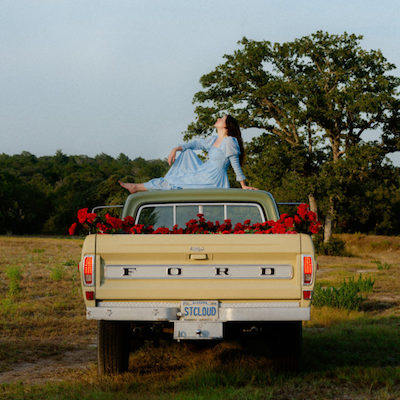
Secret Meeting score: 93
by Phil Scarisbrick
Forty years ago, a 29-year-old Bruce Springsteen released his fourth album, Darkness On The Edge Of Town. After the global success of previous record Born To Run, it was expected he would capitalise on that success and create another album filled with youthful ambition and hope. What he released instead seemed to be the polar opposite. His characters felt fragile. Where on Born To Run they were “Pulling out of here to win“, on Darkness they “Live now, only with strangers“. This was an account of the people he grew up around, the people he’d seen let down by the ‘American Dream’. These themes will be at the heart of his best work over the next four decades, but at no point did they become as angry, desperate and tactile as on his 2012 release: Wrecking Ball.
Coming four years after the global markets crashed in a way not seen since 1929, the album is built on a bedrock of vitriol and rage. Seeing the democratic values of his country eroded away by those for whom it was in their interests to deflect blame, Springsteen squarely points the flashlight at the profiteers and hate-mongers.
Opening with lead single We Take Care Of Our Own, the pounding drums and familiar guitar riff have a youthful exuberance that few would expect of a man in his sixties. Relaying his frustration at the increasing selfishness that has swept his country in the face of hardship, he sings “I’ve been stumbling on good hearts turned to stone/The road of good intentions runs dry as a bone”. This song fits right in the tradition of earlier work like Born In The USA or Glory Days, absinthal anthems that cut through the heart of faux-patriotic jingoism to expose the hard truth that the love of a nation is rarely reciprocated. Like those songs, its chorus’s proclamation “Wherever this flag is flown/We take care of our own” is wilfully misinterpreted as unbridled patriotism, when in reality it is anything but.
Easy Money is an Irish-folk inspired anthem that tells the tale of two muggers. The real target of Bruce’s ire though is the bankers who caused the crash, but do nothing to help those affected. Recalling themes he touched on with Nebraska single Atlantic City, the wider picture is always at the forefront of his thinking. But to convey it he must use words and imagery that feel familiar. During the album launch in Paris in 2012 he said – “A basic theft that struck at the heart of what America was about, a complete disregard for the American sense of history and community … In ‘Easy Money’ the guy is going out to kill and rob, just like the robbery spree that has occurred at the top of the pyramid – he’s imitating the guys on Wall Street. An enormous fault line cracked the American system right open whose repercussion we are only starting to be feel. Nobody had talked about income inequality in America for decades.” He also describes it as the “key to a record I needed to make“.
Shackled and Drawn was originally conceived for a gospel film project he’d been working on, but fit perfectly on to this record. Evoking Woody Guthrie, he paints the picture of a working man who spends his life struggling to make ends meet. Ultimately, when the country is in recession, it is the working man who suffers despite it not being his fault. “Gambling man rolls the dice, workingman pays the bill/ It’s still fat and easy up on banker’s hill/ Up on banker’s hill, the party’s going strong/ Down here below we’re shackled and drawn.” The imagery of shackles imagines the working classes as slaves to the ‘fat cat’ monopolies that decide their fate.
Speaking of his approach to songwriting, Springsteen says “My work has always been about judging the distance between American reality and the American Dream.” On Jack of all Trades, the sombre soundtrack sets the tone for this kind of analysis. Again taking aim at the banking sector he sings – “The banker man grows fat / The working man grows thin / It’s all happened before /And it’ll happen again” a narrator resigned to his fate before declaring “Shoot the bastards on sight“. Despite this despair, Tom Morello’s soaring guitar solo feels like a beacon of light smashing through the darkness.
Again featuring Morello, Death To My Hometown is another Irish-folk inspired, Dropkick Murphys-esque rocker. A highlight on the subsequent Wrecking Ball Tour, the intertwined horns and guitars feel utterly joyous. This soundtrack juxtaposed with the album’s narrative is a fine piece of songwriting. In this song, the familiar nemesis is personified as ‘death’ who has come to take his next victim. As well as this running allegory, he also takes the lack of accountability to task singing “The greedy thieves who came around/And ate the flesh of everything they found/Whose crimes have gone unpunished now/Who walk the streets as free men now“.
This Depression is a delicate melody in which our narrator pleads with a loved one for help after a loss, singing “This is my confession, I need your heart, in this depression“. Given the album’s overbearing themes, it would be obvious to assume that this loss was economic. Despite this, it would also appear to be a way for Bruce to convey his own problems with depression. Anyone who has read his superb autobiography, Born To Run, will be aware of the battle he has waged most of his adult life. This Depression feels like an exercise in catharsis.
In 2009, Bruce and the E Street Band played a series of concerts at Giants Stadium in East Rutherford, New Jersey to send it off in style before it was demolished. At those concerts, he played an early version of a song that would go on to be the title track of this record. Wrecking Ball is a blue-collar anthem that reflects on all the dreams, victories and losses that inhabit us all. It also addresses the destruction of values that led to the increasing inequality in America. Rather than just accepting them though, here our narrator stands toe-to-toe with his oppressors proclaiming “Bring on your wrecking ball“. No longer willing to accept their fate, it feels like the album’s narrative has moved on from identifying the issues and is now dealing with how you address them.
A smooth, bluesy number, You’ve Got It is probably the only throwaway moment on the album. Having more in common with the frat-rock stompers threaded throughout 1980 double-album The River, the heavy themes of the opening seven tracks give way for song that in both title and sound, is a nod to one Bruce’s heroes, Roy Orbison.
The other song salvaged from the gospel film project was Rocky Ground. Stuffed full of religious imagery, the song features excerpts of I’m a Soldier in the Army of the Lord,, a traditional gospel song performed by Congregation of the Church of God in Christ and recorded by Alan Lomax in 1942. It also features a first for a Bruce Springsteen song: a rap section. Featured throughout the track, Michelle Moore’s repeated chorus intertwines with Bruce’s heartfelt verses before she hits us with a 16-bar rap that should feel out of place, but perfectly compliments the song’s narrative of inclusiveness through adversity.
Land Of Hopes And Dreams had been a regular feature on The E Street Band ‘reunion’ tour in 1999 and 2000. Despite being a fine song, Bruce never felt he could match its live impact in the studio. This was a blessing in disguise though, as the song is absolutely essential to this album. It wasn’t until Bob Clearmountain gave the song what Bruce describes as a “transcendent mix“, that he felt able to put it on a record. Written as a song of hope for America’s immigrants as they head to the ‘Land of the Free’, the song incorporates Curtis Mayfield’s People Get Ready. The middle eight feels like a call-to-arms as he declares “This train carries saints and sinners/ This train carries losers and winners/ This train carries whores and gamblers/ This train carries lost souls/ This train, dreams will not be thwarted/ This train faith will be rewarded.”
Steve Van Zandt’s mandolin riff propels this Juggernaut, complete with gospel singers, thumping drums and soaring horns. The most important horn here though is the one that takes centre-stage at the heart of the record. Bruce’s long-time sidekick and friend, the only man to feature on one of his album sleeves but him (Born To Run‘s iconic stance) – the big man himself, Clarence Clemons who passed away in 2011. His health had been failing him for many years and by the time it came to touring Working On A Dream in 2009, special measures had to be put in place to accommodate him. He had mobility scooters backstage, a lift to the stage and a seat to rest between parts. Having been unable to contribute to the Wrecking Ball sessions, it looked like Bruce would be missing his brother-in-arms. To Bruce’s surprise though, Bob Clearmountain was able to use live recordings of Clarence playing Land Of Hope And Dreams to give the album version the soul it needed. One last waltz for ‘Scooter and The Big Man.’
Writing in Born To Run, Bruce explained “I needed the song that would address the new voices of immigration, the civil rights movement and anyone who’d ever stuck their neck out for some righteous justice and was knocked down or killed for their effort. Where were they? I decided they were all here now and speaking to those who would listen. Those spirits don’t go away. They haunt, they rabble-rouse. from beyond the grave. They have not been and can never be silenced. Death has given them an eternal voice. All we have to do is listen. That would be the message of my last song, We Are Alive. Listen and learn from the souls and spirits who’ve come before.”
We Are Alive feels like a campfire sing-song featuring all of our narrators on this record, as they reflect on life, and the lives of those around them. This is also the most overt nod to his 2006 album: The Seeger Sessions. Being brought up as a Catholic, Springsteen had been raised to believe that faith will be rewarded as after death, you rise again. This imagery finishes the album off, and underlines that for all the banker-bashing and tales of inequality, the real message here is hope.
This album is one I feel is overlooked in the pantheon of great Bruce Springsteen records. The themes presented feel timeless. We still see huge inequality in Western society. We still see the ‘haves’ gambling with the lives of the ‘have-nots’. We still have blind loyalty to institutions that have let its citizens down time and time again. But what we also still have is hope. We still have people willing to stand up and fight for those who are too weak to fight for themselves, or too jaded to want to. This record shines like a beacon, illuminating this universal struggle. It is a fight that Bruce Springsteen has long taken a keen interest in. Seeing his father exist to work, finding comfort only in a six-pack of beer and a carton of smokes. Seeing his friends go off to fight a war they didn’t understand, in a country they’d never heard of, and never coming back. Seeing the institutions designed to protect his fellow countrymen gamble with their very existence. That is why this record is one of his most important and, in every way possible, an essential album.



